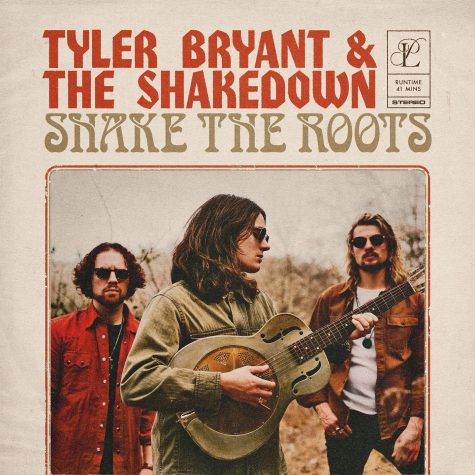OPINION: Backcountry activities offer new alternatives this summer
Get outside in fun, new ways this year
Washington offers so many options for outdoor recreation that many people may not have considered.
June 24, 2020
Have you ever seen a picture of someone having a blast outdoors and been inspired, only to have your ambitions dashed by the realization that there was likely $2,000 worth of gear and 200 hours of preparation behind that particular photo?
It’s no secret that top-notch gear, pro lessons and practice make you better at sports. Outdoor sports are no different in this regard, but don’t be intimidated. Now is the best time to start researching and investing in the adventure you have been daydreaming about.
It doesn’t require any special gear to get out and become familiar with outdoor areas in the summer. Even if your goal is to fish for largemouth bass from a boat next spring, you need to start somewhere. Just walking along and scouting local docks and riverbanks will teach you things you can’t learn on the computer from home.
Once you have ventured to a few locations, you may find that just a few bucks can get you started.
Sticking with bass fishing as an example, you can purchase a resident freshwater fishing license, a Zebco Dock Demon Complete Spinning Rod Combo, some 1/0 to 3/0 offset hooks and a bag of green/orange plastic worms for around $60. That is enough gear to go on a dozen bank fishing trips or more. You can even save on bait by using worms from the ground.
Most outdoor gear goes on sale in the fall and winter when weather is bad, especially big stuff that takes up storage space, like kayaks and canoes. REI, an outdoor goods chain, usually has its garage sale in September. Used boats and RVs will be cheapest online in early December. Since there will be some seasonal competition for your money, now is the time to start a separate budget for those sales. If you fail to plan ahead you may find your outdoor recreation budget to be running lean, but a little financial prep can earn you major gains in the gear department.
Another entry-level outdoor adventure is foraging. Mushrooms, berries, cilantro, lavender and sage; there are all kinds of stuff you can collect from outside that can be turned into artisan side dishes.
I sat down with Michael Decker, Moscow hiker and mushroom forager, to ask what kind of prep he’s done.
“I bought a guidebook, which cost about $14 on Amazon,” Decker said. “You also need a mesh bag or basket to put the mushrooms in, although I just use a gallon bag or shopping bag, and a knife to cut them with.”
Decker also said that he’s joined some foraging Facebook groups for tips and advice on where to find them. The most popular mushroom among foragers, the morel, is at the tail end of its growing season in the Palouse, but due to the recent rain, there could still be some emerging patches, Decker said.
Even though morel mushrooms are scarce, there is still a lot of quality foraging to be done this season. Huckleberries and other wild berries tend to ripen from late June through late August.
Although a shopping bag works just fine, I have found that a lightweight basket or strainer is best for berry picking because there is no need to hold it open and the mesh allows the berries to breathe and stay fresh. For berries, it’s helpful to use hard-sided breathable containers to prevent your spoils from spoiling in the heat or being crushed by accident.
Recipes for wild berry jams, jellies and desserts can be found with a quick Google search.
If backcountry camping is your aspiration, the task of purchasing all the right gear can be daunting. There is also the question of where to go, as well as safety concerns. Far from home and roads, stakes are higher than at the local pond.
Much like the bass fishing example, planning step-by-step is efficient. While researching gear and locations, there are sections of trail that can be easily day-hiked in tennis shoes. Practicing traveling to and walking from trail-heads without a full backcountry pack will cut down on future, more costly mistakes.
Downtime can be spent watching videos of experts, like solo hunter Remi Warren explaining his gear decisions afield.
I spoke to Pullman backcountry camper Kourtnie Whitfield who said that getting all the gear can be really difficult. She said even bad gear can be costly, and having to replace it due to poor performance is a major setback.
In order to avoid prepping pitfalls, consumer research is mission-critical on a limited budget. Buying backcountry gear is like a seasonal sport in itself. Now is the season: garage sale season.
Things are different during the COVID-19 pandemic, but you can still find great deals on frame packs, tents and other goods online.
Another vital part of backcountry comfort in Washington is staying dry. Good rain gear is important, and it goes on clearance in the summer. Now is also a good time to check work-wear outlets for waterproof and insulated boots.
Finally, no matter your pursuit, you’re going to want to know where to go and how to get there. The best mapping app that I’ve found is on X maps. The best time to sign up is during their 30 percent discount, which runs several times per year.
Another way to find deals is to tune into podcasts or follow your favorite outdoors personalities, like Randy Newberg, on Instagram. Podcasts are also a great medium for free lessons on-the-go. A quality outdoor podcast series is like a virtual lecture from a tenured pro.
Whatever your outdoor ambitions may be, it’s important to balance prep and purchasing with time in the field to practice.
With that in mind, I hope you keep dreaming of outdoor adventures: setting aside some money, marking your calendars. Most of all, I hope you get some time to join me outside.

















